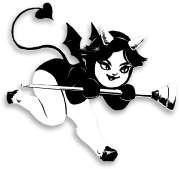|
slowdave posted:What is Mod Podge? Some kind of a glue? I'm not familiar with the brand and would like to know what it basically is. Pretty sure Modpodge is just another animal based adhesive, like elmers or gorilla glue, but of higher quality. Depending on the look you're going for, you can use acrylic materials as an alternative - I think they're more durable and predictable, but a bit more expensive. For image transfers, I usually just use hardware store grade acetone and a 'baren' like device... if you're going onto a rough surface, obviously sanding it will help your transfer. Consider sealing it in resin to make it look well crafted.
|
|
|
|

|
| # ? May 10, 2024 15:50 |
|
BigRed0427 posted:I want to try writing a script for a comic book and was wondering if anyone knew any good sites or books for tips to writing in a script format. One of the Sandman comic volumes (I think 2 or 3) has a script for an issue in it. RED by Warren Ellis has a script in the back as well. I think my copy of From Hell has one as well. A lot of short-run comics will put a script into the trade paperback as filler. There are basically no real hard guidelines for comics compared to movies - depending on the writer/artist pairing the writer may have simple scene blocking (Wolverine walks up behind dude before stabbing him) or whole panel layout descriptions. Your best bet would probably be scouring the internet for listings of what comic releases have scripts included and work on getting eyes on them. e: Amazon has a few books of just scripts: http://www.amazon.com/Panel-Two-Comic-Scripts-Writers/dp/0971633819/ref=sr_1_12?s=books&ie=UTF8&qid=1330386056&sr=1-12 http://www.amazon.com/Civil-Script-Book-Marvel-Comics/dp/0785127941/ref=sr_1_8?s=books&ie=UTF8&qid=1330386056&sr=1-8
|
|
|
|
I have a ceramics question! I want to make a latin american lidded casserole for my final project, but I can't remember the name of the specific type of casserole, so I can't look up reference pictures. They're usually unglazed, thick bottomed with inward sloping walls and no fluting at the rim. They also have a thrown, conical handle attached to the side.
|
|
|
|
Your best bet would probably be a library... but have a look at Simon Leach or Karen Karnes ceramics images online, they make nice casseroles with handles like that. Japanese teapots also have similar handles.
|
|
|
|
I'm terrible with punctuation and occasionally bad with grammar but I love telling stories. I have some that just scream inside my head. If I decided I want to pay for editing, what proof-reading services do you recommend?
|
|
|
|
BigRed0427 posted:I want to try writing a script for a comic book and was wondering if anyone knew any good sites or books for tips to writing in a script format. If you're submitting the script to a publisher, everyone has a slightly different set of standards-- here's Dark Horse's guidelines, for example. Celtx comes with a comic script template, but I haven't used it yet.
|
|
|
|
Ach, I did not consider the possibility that some people may be wishing to have their work published by an actual publisher. I was thinking of independently publishing works for free on the internet since that's what I'm planning on doing. By coincidence, my scripting method is near-identical to Dark Horse's method, and I haven't even looked at any comic scripts in a few years. I essentially made up a method that I figured would work best for me. RoeCocoa: I don't like the Celtx comic script template, since its final form is actually a chart. It's just strange to me, but whatever works for some people.
|
|
|
|
I don't know if there's a thread somewhere here regarding law/fair use and art, so I guess I'll ask this here. I googled up an old head shot of evel knievel, drew some occult stuff on it, and screen printed it. I think it looks cool and want to use it as part of my BFA show, but I go to a school where lawyers prescreen the BFA show to nip potential lawsuits in the bud. I've definitely altered the picture considerably but I don't want to proceed unless I can be reasonably sure I won't have my piece thrown out/get sued by the knievel family. I don't know poo poo about reappropriation so... any advice on where certain legal lines-in-the-sand are drawn?
|
|
|
|
Is there a way to pre-pre-screen it? Even if a lawyer here sees it and tells you it's ok the school's lawyers might decide they don't want to risk anything and force you to cut it. Also art is really weird when you just describe it.
|
|
|
|
Corky Kraptrucker posted:I don't know if there's a thread somewhere here regarding law/fair use and art, so I guess I'll ask this here. I googled up an old head shot of evel knievel, drew some occult stuff on it, and screen printed it. I think it looks cool and want to use it as part of my BFA show, but I go to a school where lawyers prescreen the BFA show to nip potential lawsuits in the bud. I've definitely altered the picture considerably but I don't want to proceed unless I can be reasonably sure I won't have my piece thrown out/get sued by the knievel family. I don't know poo poo about reappropriation so... any advice on where certain legal lines-in-the-sand are drawn? IANAL, but based on my experience, the lawyers will ask you not to show this piece. What you see as appropriative art, they will see as a derivative work, and "it looks cool" isn't sufficient for fair use (which is generally reserved for commentary on a piece, including satire and parody). (And before someone brings it up, no, profit motive is not necessary for a copyright violation to occur.)
|
|
|
|
Brief MLA citation question. So I'm writing a paper that quotes and cites speeches from classical antiquity, but I'm not entirely sure how they should be cited in the text. For example, Pericles made the famous Funeral Oration, but the person who put it on text was the historian Thucydides. I have already cited Thucydides and his translator in the works cited, but I'm not certain of what should go in the little citation tags directly after quotes, which are from the Funeral Oration. Should I put (Pericles) or (Thucydides)? Similarly, Plato is the source for anything Socrates has said, including the speech he gave just before his death, though in that case it is not always so clear where Socrates ends and Plato begins as some of the teachings he quotes appear to be reconstructed from memory. Lady of the Beech fucked around with this message at 19:08 on Mar 4, 2012 |
|
|
|
What would be the best way to recreate the look of Ben-Day or halftone dots using acrylic paint on canvas? My first attempt masking off acrylics involved tape sealed with matte medium, I but found it unreliable and wasn't happy with the outcome. Admittedly it may have had something to do with my technique and the materials I chose. How would I go about masking/stenciling everything so the dots look clean and crisp? After a bit of research, it seems DickBlick carries a number of films that might get the job done, though suggestions on a specific brand, material or overall method would be greatly appreciated. E: not to mention that a lot of the films for sale seem to be rather steep in price for single-use. Sarah Barracuda fucked around with this message at 01:34 on Mar 5, 2012 |
|
|
|
I'm curious if anyone knows of a good Swish Max tutorial page that can teach me basic things about the program. I was just hired as a graphic designer for a newspaper, but my experience to date has been with print. Most web ads I will be required to do are static, and I can do those just fine; but every once in a while, a request for an animated ad will come in. I've been told I'll be trained, but I'd just like to be able to make my way around the program and work on it on my own time  I learned to use Flash in school, but it was a while ago and I'm not confident in my skills, so I would like to brush up on my keyframe/action scripting basic stuff. So! Does anyone have some good resources they could kindly direct me to? Tutorials? Courses? Books? etc? Thanks in advance.
|
|
|
|
Sarah Barracuda posted:What would be the best way to recreate the look of Ben-Day or halftone dots using acrylic paint on canvas? Roy Liechtenstein made his ben-day dots by placing a metal screen over the canvas, than running a paintbrush (maybe it was even a toothbrush idk) over the screen.
|
|
|
|
Hey guys, I need a quick crash course of drawing poses and sketching from real life for an important opportunity that's arisen for me, so I'm trying to show as much bang as I can given the limited time frame. Is there like an online resource or something that teaches some tips or tricks that I can better convey depth, space and motion in the 1-5 minute sketches from real people moving about in their daily lives and gestures or certain features and expressions in their faces? Is it better to sketch the form like the cloth, outline of body first or the underlying gesture like skeleton style poses when sketching people on the fly?
|
|
|
|
For me the "skeleton" and the "form" come simultaneously (in fact, for me they are one and the same) so I don't really have an answer for you. I too await a link to such a crash course. EDIT: And why the hell would you draw cloth first. The cloth hangs off the body, not the other way around. no just draw naked people and pretend everybody around you is naked and that everybody who is wearing clothes is naked because nakedness makes the world go around. They have nude study classes for a reason. EDIT: It makes sense because clothes are superficial in comparison to your body, they are not a part of your body, and you are always naked under your clothes, so sketch the naked form first and then add drapery. EDIT: And I'm not sure exactly what you mean by outline either. If you mean the thing you are drawing when you are tracing around people in photos (suggested by the fact that you want to draw cloth first for some indiscernible reason) then no because that's stupid and you're just going to get a flat cutout instead of a three-dimensional form. If you mean the 2-d form then yes, draw the form. EDIT: And you should probably divorce yourself from the idea that everything is a shape with an outline and get into a 3-d understanding that everything is a form with a contour. Like henceforth learn how to shade even if you don't know how to draw. Learn how to create a sketch entirely by shading and nothing else, because nothing suggests form like a good organized heavy mess of charcoal or thick lineart or whatever. Learn how to make things heavy, like learn how to draw fat people and other plump droopy hangy things like breasts and butts and stuffed sacks hanging from a bar or something. Lady of the Beech fucked around with this message at 17:37 on Mar 11, 2012 |
|
|
|
Lady of the Beech posted:EDIT: And why the hell would you draw cloth first. The cloth hangs off the body, not the other way around. They have nude life drawing classes so you can learn how the body works and fits together, yes, but that doesn't mean every drawing has to start with a naked body. Draw what you see. If you can't see the form of someone's arm or leg or butt because of baggy clothes don't go imagining what it looks like, that's the opposite of drawing from life. It's called "Making poo poo up." Lady of the Beech posted:EDIT: It makes sense because clothes are superficial in comparison to your body, they are not a part of your body, and you are always naked under your clothes, so sketch the naked form first and then add drapery. I'd just like to point out that sitting in a coffee shop drawing what you think people look like under their clothes is creepy and not all patrons will appreciate that. You don't need to draw an entire naked body to see how the folds of cloth lie on an arm, just put down a rough skeleton and draw what you see. Lady of the Beech posted:EDIT: And I'm not sure exactly what you mean by outline either. If you mean the thing you are drawing when you are tracing around people in photos (suggested by the fact that you want to draw cloth first for some indiscernible reason) then no because that's stupid and you're just going to get a flat cutout instead of a three-dimensional form. If you mean the 2-d form then yes, draw the form. I think telling someone looking to get better at doing 5-10 minute drawings of clothed people from life that they should learn how to draw big droopy boobs and butts is not really related to the question and very creepy, especially coupled with the "draw the person naked all the time, every time" advice above. Al-Saqr, Just put down enough of a skeleton / reference to allow you to get your proportions right, and then draw what you see. (USER WAS BANNED FOR THIS POST)
|
|
|
|
gmc9987 posted:They have nude life drawing classes so you can learn how the body works and fits together, yes, but that doesn't mean every drawing has to start with a naked body. Draw what you see. If you can't see the form of someone's arm or leg or butt because of baggy clothes don't go imagining what it looks like, that's the opposite of drawing from life. It's called "Making poo poo up." It's important to note that this 'making poo poo up' will let you better internalize how clothes react to underlying forms. It may do gently caress all for you if you're always drawing from life or phots, but for illustration and related work it actually is helpful to try and figure out where the underlying pieces of people are. You come close to acknowledging this in your post, even, but a 'rough skeleton' is different from a fleshed out human being and everybody has symbolic human forms that their art will benefit from working through, even if their ultimate goal is to later return to symbolic forms (like cartoons). I do think it's weird to draw random people around you as nudes, but if you get actual imrpovement from it... Eh, it'd still probably be better to do gesture drawings or something more suited to people moving about. e: quote:Hey guys, I need a quick crash course of drawing poses and sketching from real life for an important opportunity that's arisen for me, so I'm trying to show as much bang as I can given the limited time frame. I don't know of any online resources but the answers to your questions are really like, 75% of what comprises most figure drawing books. Both methods of sketching people have their uses, but gesture drawings are way better for that time frame. Motion usually comes naturally to drawings of things from life as long as you're making sure you don't straighten the person/object out. People in motion don't generally have their center of gravity in their center, and as soon as you can get that part down you don't have to worry about it anymore. Depth has a lot of methods for portrayal, common method for gesture drawings is darkening things as they get farther. Contour drawings generally use the hell out of lines that overlap the farther part of an object. Count Uvula fucked around with this message at 09:27 on Mar 12, 2012 |
|
|
|
gmc9987 posted:They have nude life drawing classes so you can learn how the body works and fits together, yes, but that doesn't mean every drawing has to start with a naked body. Draw what you see. If you can't see the form of someone's arm or leg or butt because of baggy clothes don't go imagining what it looks like, that's the opposite of drawing from life. It's called "Making poo poo up." When I was writing all of that, I was a little too caught up in tossing around a style of loose eccentricity and hyperbole and not enough in actually getting my point across under the illusion that said style would get my point across. Of course sitting and drawing people naked in a coffee shop is creepy. I certainly have never done this in any form, and even drawing people as they actually are without asking permission from them also feels weird to me so I don't do that either. I have no opportunities for taking life-drawing classes so thanks to my timidity I get almost no practice in life-drawing. The thing I was trying to emphasize is that it is very important to learn how to draw weight and make things look heavy. In a clothed human being, the shape of the clothes depends on the shape of the body, yes? That makes the clothes trivial in comparison to the body with regards to laying down the form, and hence the gesture you lay down will nearly always be nude, or, more accurately, have a nude silhouette. If you always start with what is trivial, I believe you are at risk of just drawing an empty floating bag of cloth instead of a set of clothes with a body in it. Imagine there's a glass of water. In this situation, what form is dependent on what? The form of the water depends on the form of the glass, so naturally you'll gesture the form of the glass first and then add the water. I never meant to say draw and finish a full nude figure and then put clothes on it because that's also dumb and a waste of time and materials (unless you're drawing somebody in a swimsuit or underwear or something I guess), I'm just saying learn to gesture the 3-d nude form first and the rest will naturally follow. Lady of the Beech fucked around with this message at 14:39 on Mar 12, 2012 |
|
|
|
I'm really and honestly trying to think of a scenario where you need to cram study for figure drawing.
|
|
|
|
Thanks for your advice Count Uvula and Lady of the Beech for your helpful advice!butts! posted:I'm really and honestly trying to think of a scenario where you need to cram study for figure drawing. It's not figure drawing, it's life and quick sketches of people and gestures they're looking for (things that take between 1-5 minutes to draw). Basically the short version of the scenario is that a window of opportunity has opened for me to getting into entering the field of animation through a training program, and they've told me that I'm as good as in, however, to be eligible for a half-off scholarship, I have to jump through a series of exams and challenges to make more of a case for myself, this includes stuff like more character designs, cartoon drawings, comics, etc. which I have no problems with, but one thing that's a massive gaping hole in my case is that I have to submit gesture and quick sketches of people, this is something I'm not all that familiar with, and since I applied really early they're giving me the chance in the next few months for me to make an impact and increase my chances of getting that scholarship by going above and beyond the call of duty. this scholarship means everything to me and is one of my very few chances I have in my life at getting into the field of animation in a professional manner, so I want to make as big an impact as possible. So I'm just asking whether there's a particular way of approaching quick sketching since I want to start off in the right foot when I'm intensely sketching people for the next month and a half. so if you have any tips and tricks I would be intensely grateful.
|
|
|
|
Wow, so you're cramming for a scholarship? I wish good luck to you! :salute: If they're looking for gestures, then you know what you need to do--do gestures. Do all of the gestures. Grab a charcoal or oil pastel or some other thick spready thing (though if you're more comfortable with pencil you can use that too, it's just that I find I'm more comfortable doing gestures with something thick and messy like charcoal) Draw anything that is in front of you, preferably living things. Animals. People. Draw all of the gestures. All of them. Not much more I can say. Art is very much a "learn by doing" craft, and I'm certain you'll get the hang of gesturing and the things about form and weight I was talking about simply by doing. 
|
|
|
|
Al-Saqr posted:That actually makes sense. Best of luck!
|
|
|
|
Anyone have experience with making their own wood panels for painting? What makes a panel "archival"?
|
|
|
|
whereismyshoe posted:Anyone have experience with making their own wood panels for painting? What makes a panel "archival"? I'm maybe not the most knowledgeable guy to answer that but here's what I've been taught: If you're painting with oils and want to make a really durable painting, start with a few thin coats of adhesive (such as rabbit-skin glue) and put a layer of gesso on top of that. In the actual painting you could mix some dammar with the paints to really make it stick. Afterwards you can varnish the whole thing. With acrylics, I guess it's the same thing, just prime the wood with some kind of a glue + a few layers of gesso and you should be good to go. Also use decent paints with less filler and more pigments. Wood doesn't need all that much preparation as far as I know, as long as it's decent kind of wood. It's a pretty durable and super absorbent material. Warping is the biggest issue but you can avoid that by preparing both sides of the painting or maybe adding some kind of extra supports behind it, or you can manually straighten it later on if needed.
|
|
|
|
slowdave posted:I'm maybe not the most knowledgeable guy to answer that but here's what I've been taught: What if i want to paint on it and have the wood grain show through? I assume I would have to just use a pretty tight-grained wood but is there anything clear you can put on top to seal it before paint? i'd probably be using acrylics. Thank you for the help though.
|
|
|
|
Does anyone know the name of the artist that looks similar to Stephen Gammell's creepy and dark art, but does scenery/landscapes rather than 'characters'?
|
|
|
|
whereismyshoe posted:What if i want to paint on it and have the wood grain show through? I assume I would have to just use a pretty tight-grained wood but is there anything clear you can put on top to seal it before paint? i'd probably be using acrylics. Thank you for the help though. I'm not sure if the first part is even necessary but you could put in a really thin coat of (latex based?) glue first, let it dry and then paint using lots of acrylic medium (acrylate) so the paint is very liquid. Then put a layer of matte lacquer on top of it.
|
|
|
|
butts! posted:I'm really and honestly trying to think of a scenario where you need to cram study for figure drawing. You are a dadaist kidnapped by students from the French academy. They are holding a gun to your head and if you do not draw academically they will beard your heart.
|
|
|
|
Does anyone know of an art print site that I could buy a really big repro of some classic paintings? I want to get a 30"ish by 50"ish of a Frieseke, Courbet, Giorgione, something like that to put over my couch. Don't want to spend more than $200, if possible.
|
|
|
|
Imapanda posted:Does anyone know the name of the artist that looks similar to Stephen Gammell's creepy and dark art, but does scenery/landscapes rather than 'characters'? Are you thinking of Zdzislaw Beksinski?
|
|
|
|
I asked this in the self-taught thread, then I saw this and realized it would probably fit better here: I want to start messing around with drawing with india ink (or drawing ink? is there a real difference between the two/reason to go with one over the other?), but I'm not really sure what brand I should pick up. Seems like everything I see is in the same price range, so I'm not sure how the quality varies. I'm mostly interested in black ink, but probably will pick up a couple bottles of color to mess around with as well. In addition, I'm going to pick up a dip pen and some nibs, and I could use some advice on that as well.
|
|
|
|
|
I haven't used ink for much over the last couple years, so if anyone contradicts me they're probably the wiser one. Quality varies a lot between inks, though brushes and pens require different things. Consistency is important for pens, while brushes work well with darker inks. Speedball sucks for pens but is good for brushes (Somewhat ironic considering it's the only one I've ever seen packaged with a pen); when used in a pen it can drip and make inconsistent lines with a normal amount of ink on the brush. Calli ink is only in a couple art supply stores near where I live, but it's good stuff, really similar to speedball ink only better for pens. Higgins ink is relatively light but has a really nice consistency. Good for a pen, but the lightness makes uneven planes of color with a brush. The non-waterproof bottle of this stuff that I got was weird, though. Smelled weird and the pigment would sort of coagulate when drying. Pens... the cheap ones work.
|
|
|
|
Hi, friends! Type question. I've become more interested in experimenting with small ligatures/glyphs of particles, small words like "the", "of", "by", etc .. but I'm woefully inept at finding them, and typefaces that might include them. I know that some people will just make their own, but does anyone know of any typefaces in specific that would have them, or any search terms that might yield me tangible results? Things like this, but in more flowery, fluid styles and usually in a sort of upward arc shape  [also, if I've hit the wrong thread, feel free to make a mockery of me & point me in the right direction, thanks!]
|
|
|
|
Anyone have some tips on ways to de-stress and loosen up, in order to really start practicing and studying? Whenever I try and do some practicing and just drawing things I need to work on over and over again, I always feel like I'm not good enough, or that I need to make a finished drawing (which defeats the point of doing studies in the first place).  I just need some help getting out of that mindset which keeps me from learning anything and just makes me feel worse. I just need some help getting out of that mindset which keeps me from learning anything and just makes me feel worse.
|
|
|
|
Suzuki Method posted:Anyone have some tips on ways to de-stress and loosen up, in order to really start practicing and studying? Whenever I try and do some practicing and just drawing things I need to work on over and over again, I always feel like I'm not good enough, or that I need to make a finished drawing (which defeats the point of doing studies in the first place). Specifically for art? If you can work physically, you could try practicing on materials that are cheap and crappy. Cardboard, crinkled printer paper, etc. Or switch to drawing tools like charcoal on the end of a stick, which basically forces you to produce imprecise work. You could even burn most of them after you're done, if that would help. You could also use a timer to do, say, 10 five-minute practice drawings, then let yourself work on a longer more finished piece. As for stress and psychological blocks, I'm not sure. It sounds like you're focusing a lot on the end result, rather than the process. Why do you feel that your art is inadequate, or that everything you make needs to be judged against other art? Meditating, once you get the hang of it, can be very helpful for de-stressing and analyzing feelings like that. "you are here" by Thich Nhat Hanh is a very straightforward and fun read, and is probably a good starting point if you're at all interested in meditation or the practice of Buddhism (and don't mind language that might seem a little bit new-age at first).
|
|
|
|
humanROBOT posted:Hi, friends! Type question. Are you talking about actual common words included as a specialized glyph/ligature? I don't think there's a searchable database where you can find that sort of thing.
|
|
|
|
humanROBOT posted:Hi, friends! Type question. They're called catchwords. Phaeton has a ton of them.  Emigre's "Brothers" also has a bunch. But they refer to them as 'word logos'. 
raging bullwinkle fucked around with this message at 04:03 on Mar 17, 2012 |
|
|
|
You know how traditional animators often insert themselves into their animations? They might, you know, erase a door, and now Daffy Duck is trapped. That sort of thing. My question is, are there any directors who do this in their films? Or is this solely a traditional animation phenomenon?
|
|
|
|

|
| # ? May 10, 2024 15:50 |
|
raging bullwinkle posted:They're called catchwords. Phaeton has a ton of them. gently caress, this is exactly what I was looking for, I just had no idea the search terms (turns out searching for things involving "the", "of", etc .. don't turn up so well on google, who would have guessed?  ) .. Thank you so much! ) .. Thank you so much!
|
|
|






















